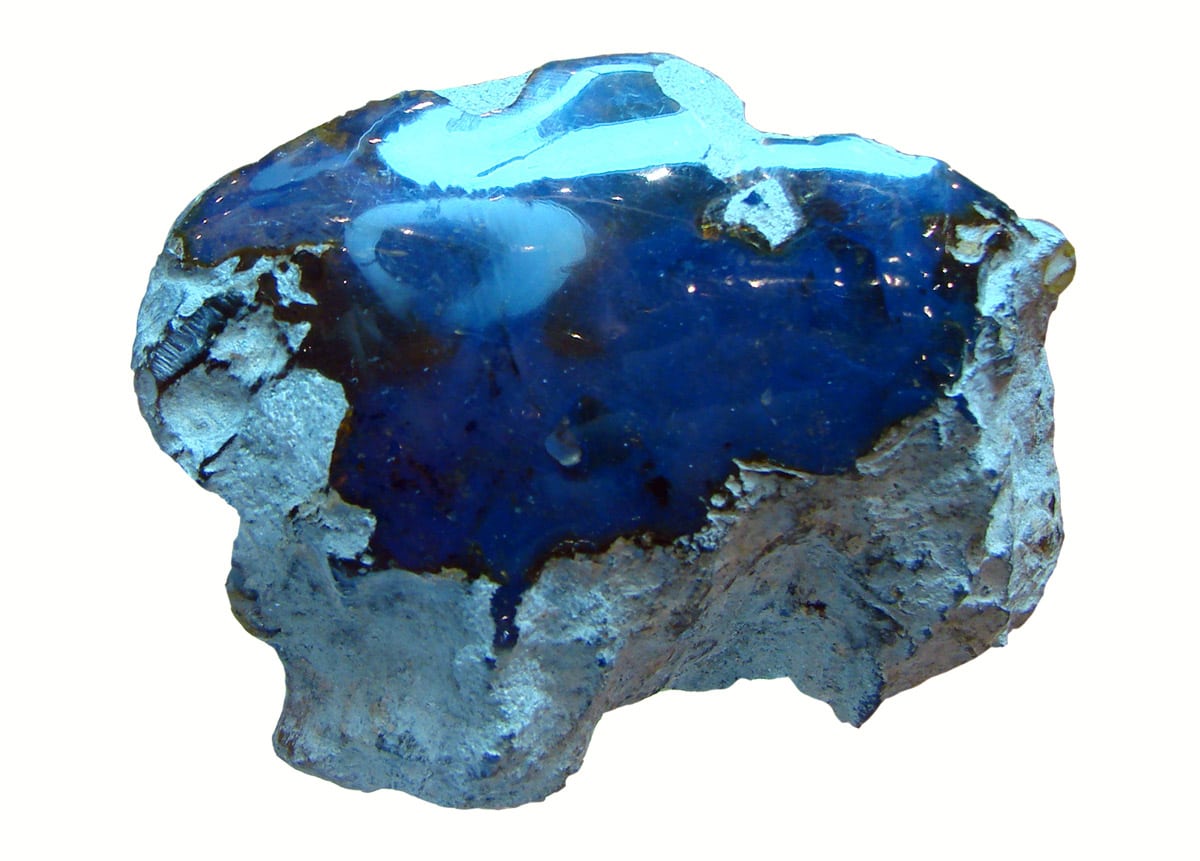World 🢖 North America 🢖 Central America 🢖 Guatemala
Gemstone finds 🢔 Rare natural materials 🢔 Geological wonders 🢔 Categories of wonders
Wonder
Find of Olmec blue jadeite, Río El Tambor
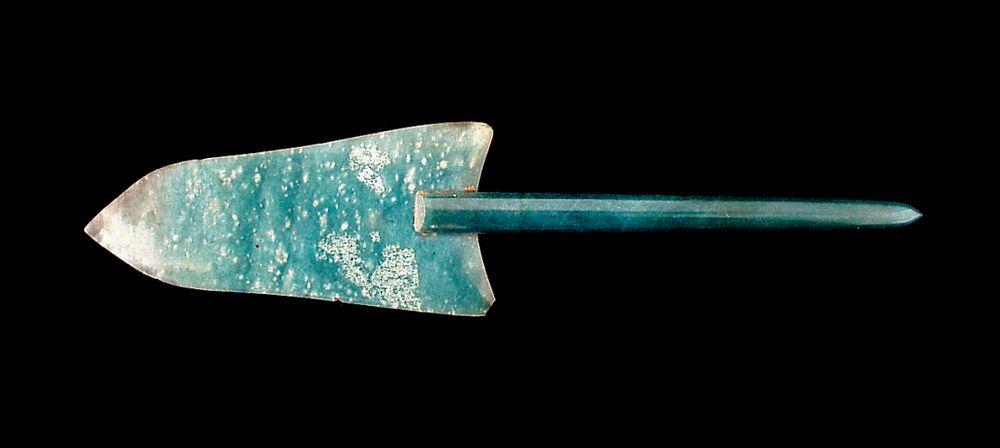
 In short
In short
Mines of the legendary Olmec blue jadeite were elusive. Only in 1998 – 2000 in Guatemala were found some locations of this unique stone. The richest finds are in the upper reaches of Río El Tambor.
 42.8%
42.8%
GPS coordinates
Location, address
Gemstones
Map of the site
If you see this after your page is loaded completely, leafletJS files are missing.
 In detail
In detail
The most valuable material in Mesoamerica
Jadeite is an unusual stone. It is both handy and beautiful. The stone is very dense and hard – as hard as steel. It is durable and tough – the stone does not break as easily as most other stones. And at the same time, polished jadeite can be gorgeous – in a bright, unusual color, slightly translucent and glossy. The best-known color of jadeite is deep green and, indeed, these are unusual and beautiful stones. Nevertheless, there are other colors as well. Ancient Chinese loved near-white jadeite, there are found beautiful lavender-colored stones. But one color stands out: there is a light blue and green-blue jadeite which was the most sought stone in the most ancient civilization in Mesoamerica – Olmec civilization. This culture flourished from 1500 BC to 400 BC and these people created truly surprising works of art.
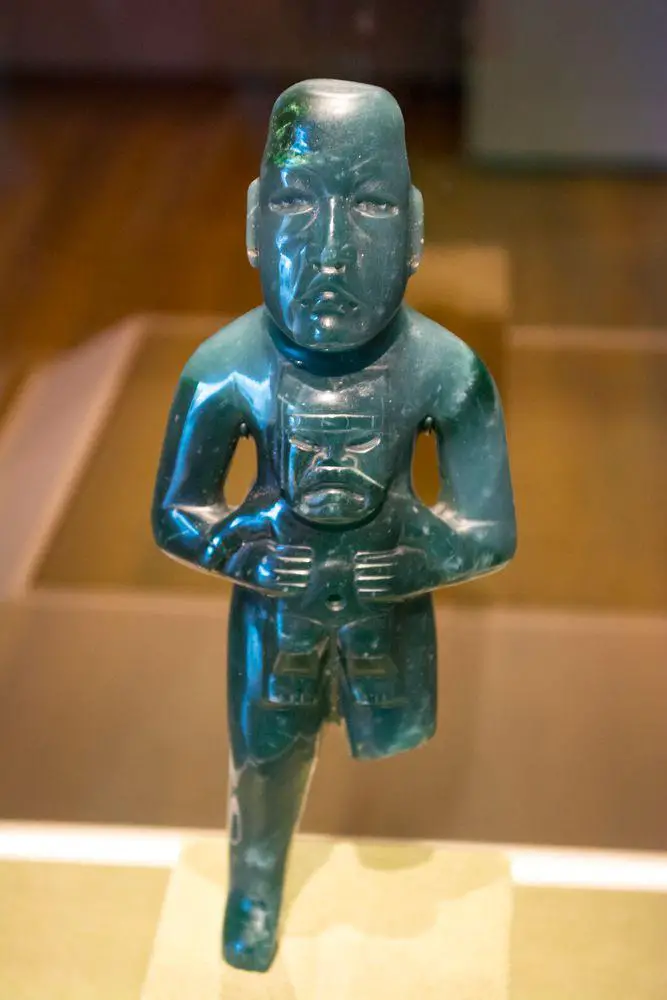
Olmecs used diverse kinds of jade but since the 19th century art collectors noticed an unusual variety of stone – blue-colored jadeite, colored by traces of titanium and iron. This stone though becomes rarer in later, Maya art. Maya preferred deep green stones (Imperial Green) which are absolutely gorgeous but… more common.
Lost mines
Jadeite was the most valuable material for the ancient Olmecs, Maya, Zapotecs, and other Mesoamerican cultures.
In the 16th century whole of Mesoamerica was conquered by the Spanish. Mayans (who controlled the jadeite mines) dispatched guards to guard their treasure – mines of the most valuable material known to them.
Cortés and Montezuma were accustomed to playing a native game which in many ways resembles chess… It was their further custom at the close of each day’s game to present each other with some gift. At the close of one day’s game, the Aztec monarch presented Cortés with several large discs of gold and silver handsomely worked. Cortés was greatly pleased and so expressed himself. Montezuma smiled and said: The gift tomorrow shall be such that today’s gift will seem in value and preciousness, when compared with it, as no more than a single stone tile on the roadway… The royal treasurer of Montezuma brought in on a golden slaver the royal gift, four small carved jade beads. The bitter disappointment of Cortés was so great that he could scarcely conceal it.” (Willard T.A., The City of the Sacred Well. 1926).
But Europeans had quite different priorities: gold and better-known jewels, above all: emeralds. Thus Mayans kept their mines secret and Spaniards disregarded this. Guards of the mines died out, the location of the mines was forgotten.
When Europeans later found the beautiful jadeite artifacts of Mayans and other local cultures, they did not have any knowledge about the source of this stone. There were not known finds of jadeite in this region and some scientists even considered that jadeite was imported here from China. A closer chemical and structural analysis seemed to testify: the Olmec blue jadeite is different and, most likely, comes from another place. More careful geologists though noted that the conditions during the formation of rocks can be very diverse even in a smaller area.
Rediscovery of the Olmec blue jadeite
The finds of jadeite in the Central Motagua Valley are known to modern people since 1952 (Robert Leslie). Initially, the finds were negligible, and only in 1998, after the hurricane Mitch, the jade was rediscovered in the flood-disturbed river sediments in Motagua and its tributaries.
Until the early 21st century most of the jade mines were to the north from Motagua River, in the southern part of Sierra de Las Minas mountains. A great find was made near Rio Hondo town – prospectors found here high-quality jadeite in translucent, deep green color. Here also were found remnants of mining from the times of Mayan civilization.
In 1999 prospectors noticed the much sought blue jadeite in the river sediments. In 2000 Russel Seitz, led by local prospector Carlos Gonzalez, found the first (in modern times) mine of bluish jadeite near El Ciprés, north from Motagua River.

Already in 1995 there were noticed pebbles of bluish-green jadeite in the Río El Tambor, south from the Motagua River. Nevertheless, only in 2002 by Carlos Gonzalez were found the ancient mines with huge blocks of high-quality Olmec blue jadeite in the upper reaches of Río El Tambor. Some of the best finds have been made in Quebrada Seca. Especially impressive here is a boulder of pure jadeite which is some 300 tons heavy.
This find was further reported to the scientific community by K.Taube in 2005, who found several ancient settlements of the miners around these mines.
There are reported also other finds, further south – but, most likely, some of these finds are kept in secret.
Jadeite industry
Currently, the jadeite industry of Guatemala is centered around the city of Antigua, where the stones are carved and sold. Jadeite is mined in diverse locations which are up to 40 kilometers far from each other. For the most part, the mining is unsophisticated – a group of people comes with a truck, drive as close to the stones as possible, use gasoline-powered jackhammers to divide it in manageable chunks, load the pieces in the truck and drive to Antigua or some other location where they can sell this material.
Jadeite today still is not as valuable, as it was in the times of ancient Olmecs. It is also hard to evaluate the real value of these stones – the quality varies from piece to piece and much of the value is created by the skills and imagination of the stone carver.
The best samples of jadeite though are very, very expensive, with a price exceeding 600,000 USD per kg. Besides the “Olmec Blue” there are known and traded some more varieties of blue-colored jadeite from Guatemala: “Midnight Blue” (darker, more intense blue color) and “Ventana Blue” (lighter, more translucent blue). All of these varieties are extremely rare or, let’s say it directly: unique.
References
- Karl Taube, Zachary Hruby and Luis Romero. Jadeite Sources and Ancient Workshops: Archaeological Reconnaissance in the Upper Río El Tambor, Guatemala, FAMSI © 2005. Page accessed on 18th June 2019.
- David Hargett. Jadeite of Guatemala: A Contemporary View, Gems & Gemology, Summer 1990. Page accessed on 21st June 2019.
- Kim Be Howard, A.G. Jadeite. Page accessed on 21st June 2019.
Find of Olmec blue jadeite of Río El Tambor is included in the following article:
 Linked articles
Linked articles
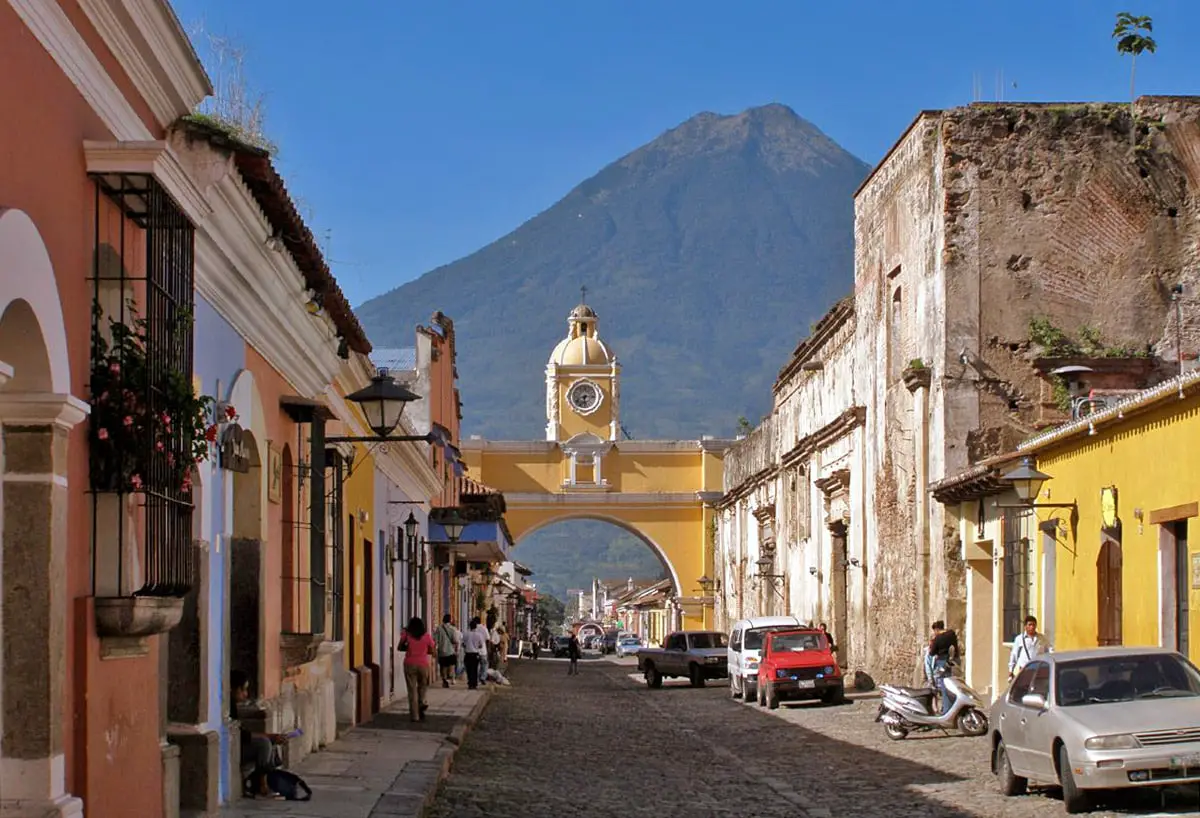
Wonders of Guatemala
The number of exciting landmarks in Guatemala is very high.
By far the most important landmarks in Guatemala are Maya archaeological monuments and the heritage of other Pre-Columbian cultures. Guatemala together with the nearby Mexican states was the cradle of the Mesoamerican civilization – one of the great civilizations in the world.
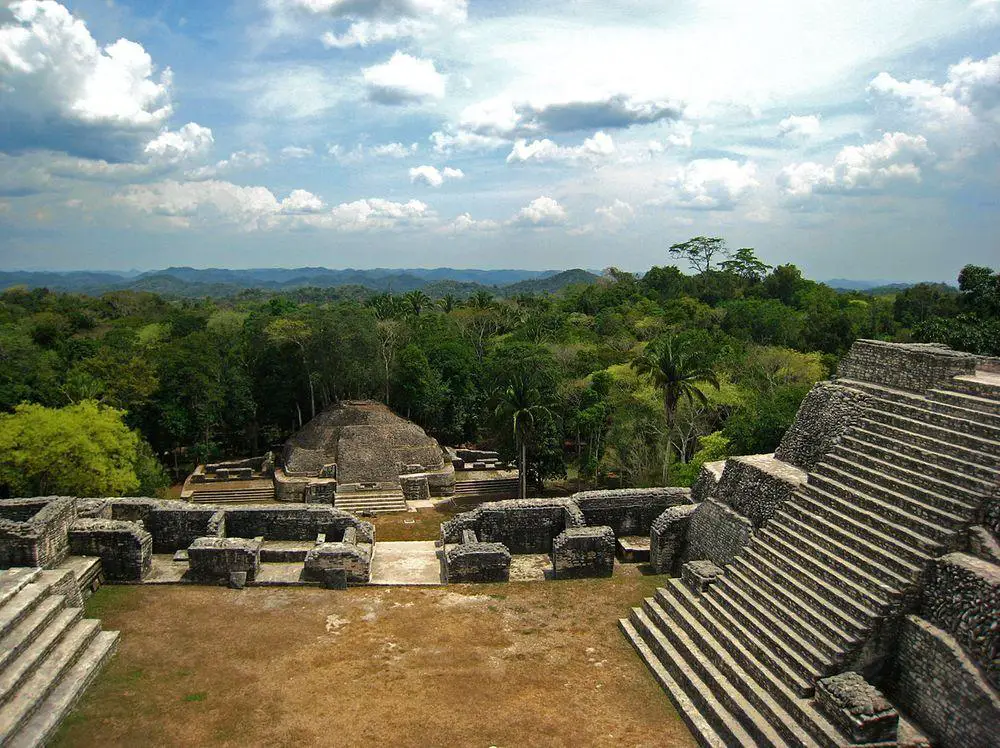
Wonders of Central America
Central America is a transition: a land bridge between the enormous North American and South American continents, a narrow divide between the Atlantic and Pacific oceans, and a meeting point of the mysterious, grand civilizations of the past and the rich European heritage.
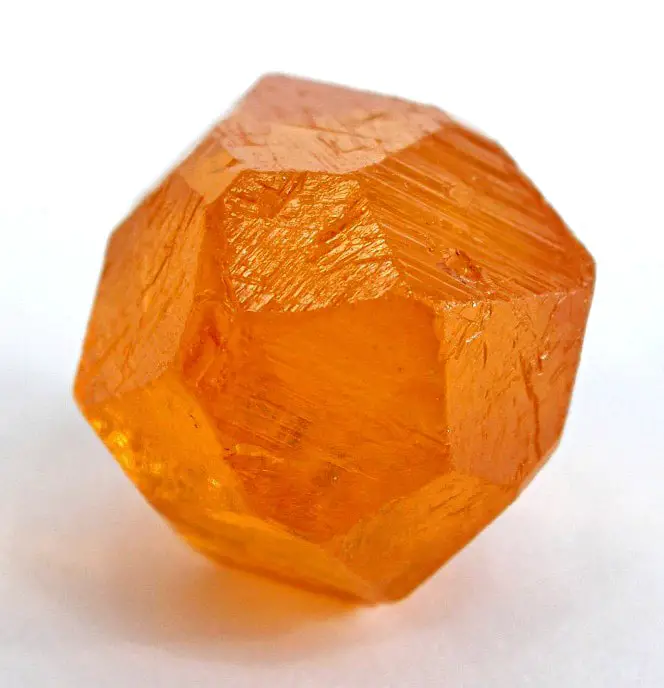
Gemstone finds
Gemstone finds are locations where are found rare and beautiful stones which that can be used for jewelry and have high market value.
Many finds of gemstones, such as jadeite mines in Guatemala or Sar i Sang lapis lazuli mines in Afghanistan – have been used for millennia and are legendary places.
 Recommended books
Recommended books
Stone of Kings: In Search of The Lost Jade of The Maya
A book perfectly timed for the re-setting of the Maya calendar in 2012…. Part history, popular science, armchair travel, and real-life treasure hunt, this is the story of pre-Columbian jade—the precious stone revered by ancient Aztecs, Incans, and Maya—and the scientists, collectors, explorers and entrepreneurs who have been searching for the mythical jade mines for a century.

